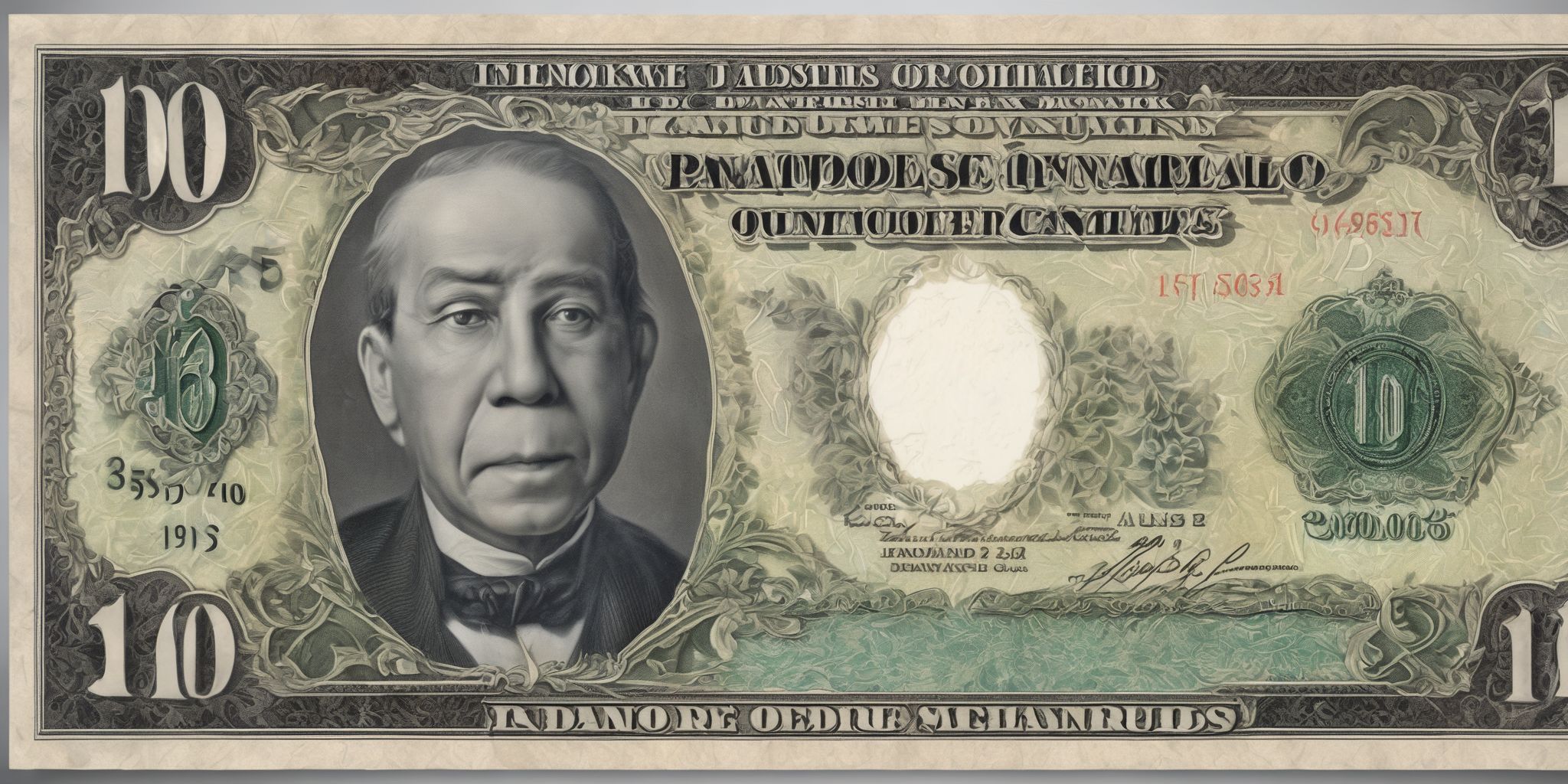A Beginner's Guide to Foreign Exchange Withdrawal: Everything You Need to Know
Do you dream of traveling the world, experiencing different cultures, and indulging in exotic foods? If the answer is a resounding "yes," then understanding the art of foreign exchange withdrawal is a skill you need to master. Whether you're planning your first international adventure or are a seasoned globetrotter, navigating the world of currency exchange can be overwhelming.
Fret not! In this beginner's guide, we'll take you on a journey to demystify foreign exchange withdrawal, equipping you with everything you need to know to make the most of your hard-earned cash when exploring far-off lands. Get ready to bid adieu to currency confusion and embrace the beauty of hassle-free money matters abroad.
What is Foreign Exchange Withdrawal?
Foreign exchange withdrawal refers to the process of withdrawing local currency from a foreign bank account or exchanging foreign currency for cash. It allows travelers to access funds while abroad. When withdrawing money, the exchange rate is an important factor to consider as it determines the value of your funds in the local currency. Understanding exchange rates and their fluctuation helps you make informed decisions and maximize the amount of local currency you receive.
Whether using ATMs,credit cards, or bank transfers, each method has its own advantages and potential fees to be aware of. Planning ahead and researching the best options can help you save on unnecessary costs and ensure a smooth foreign exchange withdrawal experience.
Why is Foreign Exchange Withdrawal Important?
Foreign exchange withdrawal is important because it allows you to access local currency when you're traveling abroad. Without it, you would have difficulty making purchases, paying for transportation, or covering other expenses during your trip. By withdrawing cash in the local currency, you can avoid the inconvenience of carrying large amounts of foreign currency or relying solely on credit cards.
It also helps you navigate situations where cash is the preferred form of payment, such as in markets or smaller establishments.
Understanding Exchange Rates
What are Exchange Rates?
Exchange rates refer to the value at which one currency can be exchanged for another. They determine the conversion rate when you withdraw money in a foreign currency. Exchange rates fluctuate based on various factors such as economic stability, interest rates, political events, and market demand. Understanding exchange rates is crucial for foreign exchange withdrawal as it directly affects the amount of money you receive.
For example, if the exchange rate is favorable, you'll get more of the foreign currency when you withdraw. Keeping an eye on exchange rates before making a withdrawal can help you maximize your funds and ensure you get the best value for your money.
Factors Influencing Exchange Rates
Exchange rates are determined by a variety of factors, including economic conditions, interest rates, political stability, and market speculation. Economic indicators such as GDP growth, inflation rates, and employment figures can have a significant impact on a country's currency value. Central bank policies, such as interest rate adjustments and quantitative easing, also influence exchange rates. Political events like elections or geopolitical tensions can create volatility in currency markets. Furthermore, market sentiment and speculators' actions can drive short-term fluctuations. Understanding these factors can help you make informed decisions when planning your foreign exchange withdrawals. Keeping an eye on economic news, staying updated with central bank announcements, and assessing political risks are crucial in determining favorable times to withdraw foreign currency.
How to Check Current Exchange Rates
To check current exchange rates for foreign exchange withdrawals, you can use various online tools and platforms. Popular websites and mobile apps offer real-time currency conversion rates, allowing you to compare and choose the most favorable rates.
Additionally, many banks and financial institutions provide exchange rate information on their websites or through customer service. It's advisable to check rates from multiple sources to ensure accuracy and find the best deals. Remember that exchange rates fluctuate constantly, so it's recommended to check for updated rates shortly before making your withdrawal to maximize the amount you receive in the local currency.
Types of Foreign Exchange Withdrawal
ATM Withdrawals
ATM withdrawals are a common method for foreign exchange withdrawal. When using an ATM, you can withdraw local currency directly from your bank account in your home currency. This allows you to access cash conveniently and avoid carrying large amounts of foreign currency.
One key advantage of ATM withdrawals is that they often offer competitive exchange rates compared to other methods. However, it's important to be aware of any ATM fees or foreign transaction fees that may be charged by your bank or the ATM operator. Additionally, it is wise to inform your bank about your travel plans to avoid any issues with card usage abroad.
Remember to keep your card and PIN secure while using foreign ATMs to protect yourself from potential fraud.
Credit Card Withdrawals
Credit card withdrawals are a convenient option for foreign exchange withdrawal. When using a credit card abroad, you can withdraw cash from ATMs in the local currency. This eliminates the need to carry large amounts of cash. However, it's important to be aware of potential fees and charges associated with credit card withdrawals, such as foreign transaction fees or cash advance fees.
Additionally, some credit cards may offer more favorable exchange rates than others, so it's wise to compare and choose a card with competitive rates. Remember to notify your credit card provider about your travel plans to avoid any potential issues with card usage.
Bank Transfers
Bank Transfers offer a convenient way to withdraw foreign currency from your bank account. By transferring funds electronically, you can access your money overseas without the need for physical cash or credit cards. Many banks provide this service, allowing you to send money directly to a local bank account in your destination country. This method is especially useful for larger withdrawals or when ATMs have withdrawal limits.
Keep in mind that bank transfers may involve fees, and exchange rates offered by banks might not be as favorable as other options. It is recommended to compare rates and fees before proceeding with a bank transfer.
Foreign Exchange Withdrawal Fees and Charges
Understanding Fee Structures
Understanding Fee Structures in foreign exchange withdrawal is crucial for managing the costs associated with accessing your funds abroad. Different financial institutions and service providers have varying fee structures, including transaction fees, ATM fees, and currency conversion fees. Transaction fees are charged for each withdrawal or transfer made, while ATM fees are incurred when using ATMs that belong to a different network.
Currency conversion fees are applied when you withdraw money in a currency different from your account's base currency. To minimize fees, consider using ATMs within your bank's network, withdrawing larger sums less frequently, and choosing the local currency option when prompted. Researching and comparing fee structures can help you find the most cost-effective options for your foreign exchange withdrawals.
How to Minimize Foreign Exchange Fees
To minimize foreign exchange fees when making withdrawals, consider the following strategies.
First, choose a bank or financial institution that offers favorable exchange rates and lower fees for foreign transactions.
Secondly, withdraw larger amounts less frequently to minimize the number of transaction fees incurred.
Additionally, consider using a credit card with no foreign transaction fees or a prepaid travel card that allows you to lock in exchange rates in advance.
Finally, avoid using dynamic currency conversion services when given the option, as they often come with high fees. These steps can help you save money and make the most of your foreign exchange withdrawals.
Tips for Foreign Exchange Withdrawals
Research Your Destination's Currency
Researching your destination's currency is vital when it comes to foreign exchange withdrawal. Understanding the exchange rate and any potential fees or charges associated with the currency can help you plan your finances better.
For example, if you're traveling to Europe and the euro is strong compared to your home currency, it may be wise to withdraw a larger amount at once to take advantage of the favorable rate. On the other hand, researching can also alert you to any restrictions or limitations on currency exchange in certain countries, allowing you to make the necessary arrangements in advance. Take the time to research and stay informed to make smarter decisions when withdrawing foreign currency.
Notify Your Bank in Advance
Before traveling abroad and planning to make foreign exchange withdrawals, it is wise to notify your bank in advance. Informing your bank about your travel plans helps prevent any potential disruptions or issues with your foreign exchange transactions.
By notifying your bank, they can make a note in your account to ensure that your foreign exchange withdrawals are not flagged as suspicious activity. This proactive step can help you avoid your card being blocked or experiencing delays in accessing your funds while abroad.
Additionally, notifying your bank allows them to provide you with important information about any fees, charges, or limitations that may apply to your foreign exchange withdrawals. This way, you can plan your withdrawals accordingly and have a clear understanding of any potential costs involved.
To notify your bank, you can typically call their customer service or use their online banking platform. It's recommended to do this a few days before your departure to allow sufficient time for the notification to be processed.
By taking the simple step of notifying your bank in advance, you can ensure a smoother and hassle-free experience when making foreign exchange withdrawals during your travels.
Withdraw Larger Amounts
When it comes to foreign exchange withdrawal, it is generally more advantageous to withdraw larger amounts of cash at once. By doing so, you can minimize the number of transactions and the associated fees. Additionally, withdrawing larger sums provides you with enough local currency to cover your expenses for a longer period. This can be especially beneficial if you're traveling to a remote location or a place with limited access to ATMs or currency exchange services. However, it's important to keep your money safe and secure while traveling with larger amounts, so consider using a money belt or keeping the cash well-hidden in a secure location.
Beware of Dynamic Currency Conversion
- Some merchants or ATMs abroad may offer Dynamic Currency Conversion (DCC) when making a foreign exchange withdrawal.
- DCC allows you to pay in your home currency instead of the local currency.
- However, this convenience often comes with hidden fees and poor exchange rates, resulting in more expensive transactions.
- Always choose to be charged in the local currency instead of opting for DCC to avoid unnecessary costs.
- Keep an eye out for DCC offers on payment terminals and decline them to ensure you receive fair exchange rates and minimize additional charges.
Alternatives to Foreign Exchange Withdrawal
Using Prepaid Travel Cards
Prepaid travel cards are a convenient option for foreign exchange withdrawal. These cards are loaded with a specific currency and can be used like a debit or credit card. One benefit is that you can lock in the exchange rate when you load the card, avoiding potential fluctuations. They are widely accepted and offer security if lost or stolen.
Additionally, some cards allow you to reload funds online or through mobile apps. Keep in mind that there may be fees associated with these cards, such as initial setup, ATM withdrawal, or reload fees. Compare different card options to find the most suitable one for your travel needs.
Using Currency Exchange Services
When it comes to foreign exchange withdrawal, another option to consider is using currency exchange services. These services allow you to exchange your money for the currency of your destination country. They often offer competitive exchange rates and may have lower fees compared to banks or ATMs.
Additionally, currency exchange services can provide convenience by offering multiple locations, extended hours, and online platforms for easy transactions. However, it's important to research and compare rates and fees across different providers to ensure you get the best deal. Consider using currency exchange services if you prefer a dedicated service for your foreign currency needs.
Over to you
Foreign exchange withdrawal can be a daunting task for beginners, but understanding the process is crucial. When withdrawing money from a foreign bank, it's important to account for exchange rates, fees, and potential limitations. Exchange rates determine the value of your withdrawn currency in your home country, and these rates can fluctuate. It's essential to research and compare rates in order to get the most value from your withdrawal.
Be aware of any fees associated with the withdrawal, including ATM fees, conversion fees, and transaction fees.
Additionally, some banks may have daily limits on how much you can withdraw, so it's important to plan accordingly. By familiarizing yourself with the process and its intricacies, you can avoid unnecessary fees and maximize your foreign exchange withdrawal.


